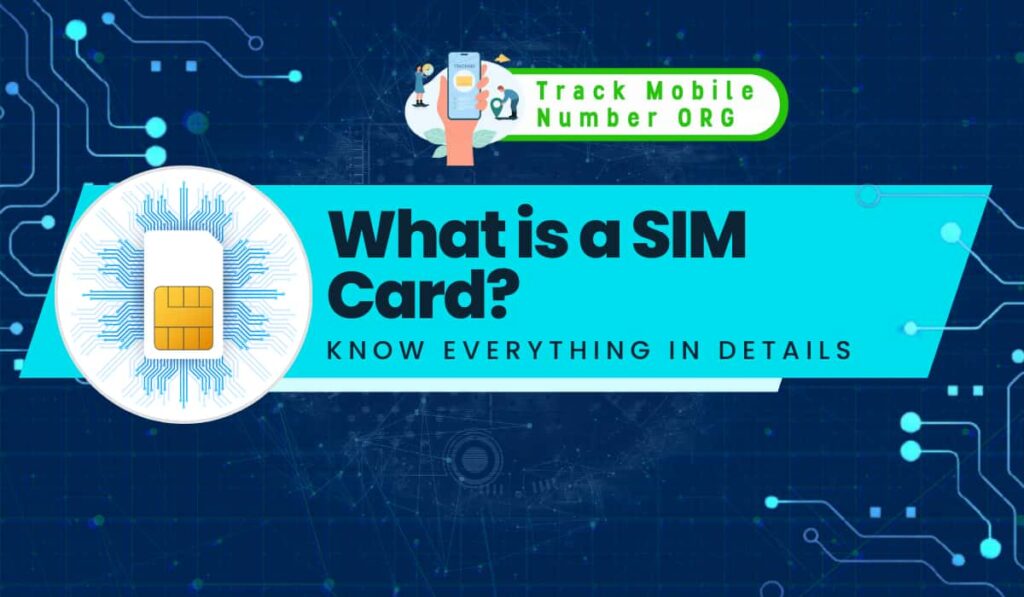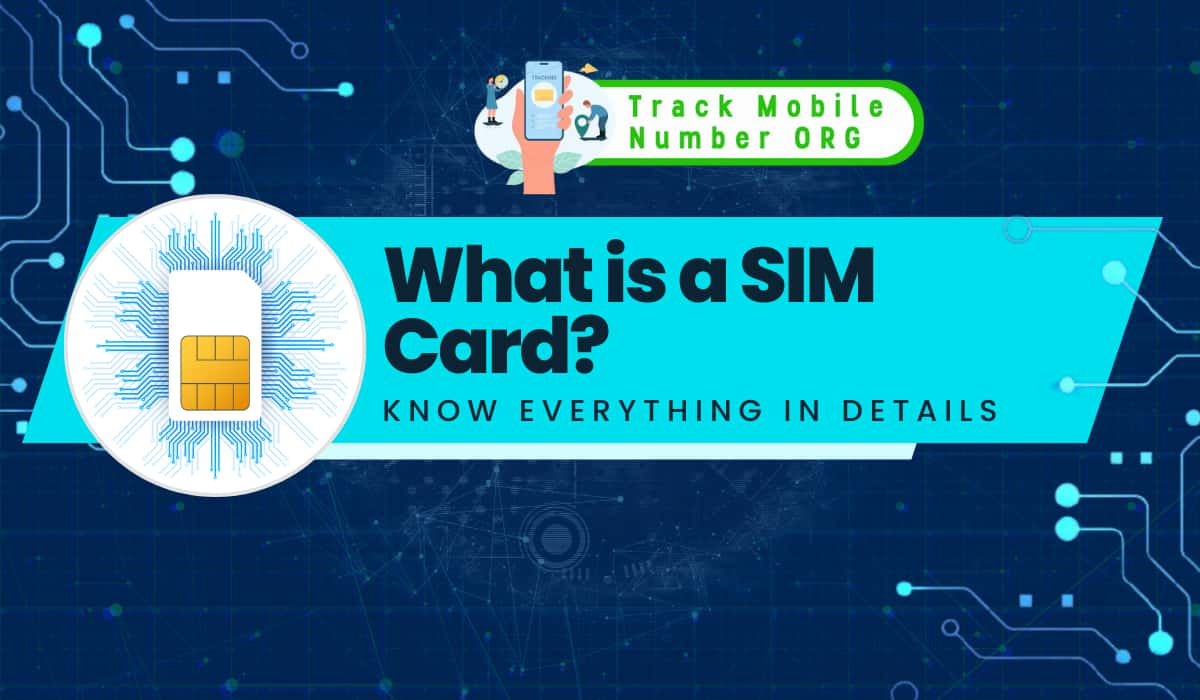In the world of mobile communication, the SIM card is one of the most important components that make your mobile phone work. But what exactly is a SIM card, and how is it connected to your mobile number?

Let’s know everything about SIM cards, their working, their functions, and their relationship with your mobile number.
What is a SIM Card?
A SIM (Subscriber Identity Module) card is a small, portable memory chip used in mobile phones to store network and contact information related to your mobile service.
This information includes your mobile number, network authorization data, personal security keys, contact lists, and text messages. In short, the SIM card is what enables your phone to connect to a mobile network and make calls, send texts, and use mobile data.
Key Features of a SIM Card:
- Size: SIM cards come in different sizes: Standard, Micro, Nano, and e-SIM (embedded SIM).
- Memory: The SIM card stores a limited amount of data, including your mobile number, contacts, and some SMS messages.
- Portability: You can remove a SIM card from one device, insert it into another and transfer your mobile service and number to the new device.
How Does a SIM Card Work?
The SIM card works by storing your mobile number and other relevant data, which the mobile network uses to identify and authenticate your device. Here’s how it works:
- Authentication: When you insert a SIM card into your mobile phone, it communicates with the network using a unique identification number stored on the card. This number, known as the International Mobile Subscriber Identity (IMSI), allows the network to authenticate your device.
- Network Connection: Once authenticated, the SIM card enables your device to connect to the mobile network. This allows you to make calls, send texts, and use mobile data.
- Storage: The SIM card also stores your contacts and some text messages. It makes the process easy to transfer these details if you switch devices.
Relationship Between SIM Card and Mobile Number
Your mobile number is closely tied to your SIM card. Here’s how the relationship works:
| Aspect | Explanation |
|---|---|
| Mobile Number Storage | Your mobile number is stored on the SIM card, which is used by the network to identify your account. |
| Network Identification | The SIM card communicates your mobile number to the network, allowing it to recognize your device. |
| Portability | You can transfer your mobile number to a new device by simply moving your SIM card from one phone to another. |
| SIM Swapping | If your SIM card is damaged or lost, you can get a new one from your carrier, and your mobile number will be transferred to the new SIM card. |
Types of SIM Cards
Over the years, SIM cards have evolved in terms of size and functionality. Here are the different types of SIM cards:
| Type of SIM Card | Description | Example Devices |
|---|---|---|
| Standard SIM | Smaller than the Standard SIM, commonly used in smartphones before the introduction of Nano-SIM. | Older mobile phones like the Nokia 3310 |
| Micro SIM | Smaller than the Standard SIM, commonly used in smartphones before the introduction of Nano-SIM. | Early iPhone models, some Android devices |
| Nano SIM | The smallest physical SIM card is used in most modern smartphones. | iPhone models from the iPhone 5 onwards, most Android smartphones |
| e-SIM | An embedded SIM is built directly into the device which eliminates the need for a physical card. | iPhone models from iPhone XS onwards, Google Pixel models, Samsung Galaxy models |
How to Get a SIM Card
Here are the steps to get a SIM card:
- Choose an Operator/Carrier: Decide which mobile network carrier you want to use. In India, there are 4 operators: Jio, Airtel, Vi (Vodafone Idea), and BSNL.
- Visit a Store: Go to the carrier’s retail store or an authorized dealer.
- Provide Identification: You will need to provide identification, such as an Aadhaar card, to get a SIM card.
- Select a Plan: Choose a prepaid or postpaid plan that suits your needs.
- Activate the SIM: Once you receive your SIM card, it will need to be activated. This can often be done by the store or by following the instructions provided with the SIM card.
SIM Card Security
Since your SIM card holds sensitive information like your mobile number and contacts, it’s essential to keep it secure. Here are some tips:
- Use a PIN Code: Most SIM cards come with a Personal Identification Number (PIN) that you can enable to prevent unauthorized use.
- Keep it Safe: Don’t remove your SIM card unnecessarily and always store it in a safe place when not in use.
- Report Loss Immediately: If your SIM card is lost or stolen, contact your carrier immediately to block the card and prevent misuse.
Why SIM Cards are Important
SIM cards are important because they are the key to connecting your mobile device to the nearby network. Without a SIM card, your phone cannot function as a mobile communication device. The SIM card is what links your device to your mobile number and with this, you can make calls, send texts, and access mobile data.
Practical Uses of SIM Cards:
- International Travel: When travelling abroad, you can switch to a local SIM card to avoid expensive roaming charges while retaining your mobile number for local use.
- Device Upgrades: If you upgrade to a new phone, you can transfer your existing SIM card to the new device to keep your mobile number and contacts.
Conclusion
The SIM card is a small but heart component of your mobile phone, responsible for storing your mobile number and connecting your device to the mobile network. Its relationship with your mobile number is what makes mobile communication possible.
As technology evolves, so too do SIM cards, with advancements like e-SIMs offering even more convenience and flexibility. Whether you are using a Standard SIM, Micro SIM, Nano-SIM, or e-SIM, you should understand how your SIM card works and how it is related to your mobile number.


